
<p>It takes several weeks to pickle vegetables, and you need a hefty, sturdy vessel, such as a stone crock, to keep them in during fermentation. During pickling, lactic acid bacteria appear naturally on the surface of the pickles and converts their sugars to lactic acid, which acts as a preservative. Fermented pickles, like sauerkraut, can be stored for longer periods than their fresh counterparts -- up to 4 to 6 months in the refrigerator and one year if canned and stored in a cool, dry place.</p>
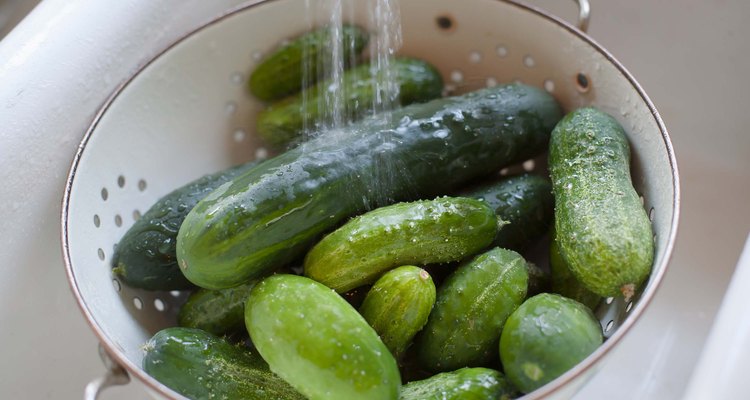
<p>Wash the cucumbers in cool water, using a vegetable brush to scrub them clean. Cut about 1/16 inch off the blossom end and slice off all but about 1/4 inch of the stem ends of the cucumbers.</p>
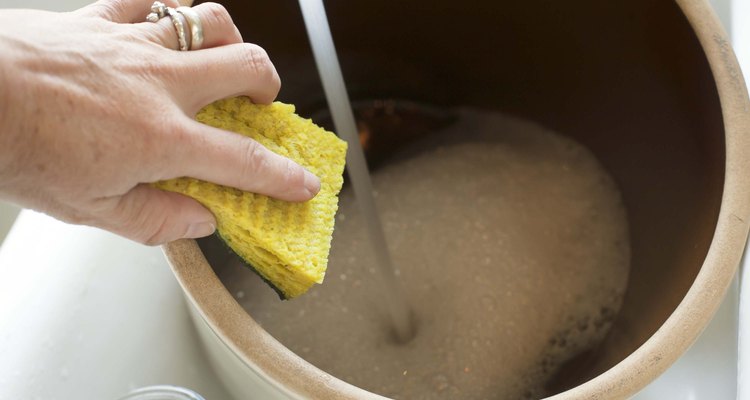
<p>Wash the crock, a plate and the jar, and sterilize them using boiling water. Place the crock in a room with a temperature between 55 and 75 degrees Fahrenheit; choose a place the crock can sit for 2 to 3 weeks while the cucumbers ferment.</p>
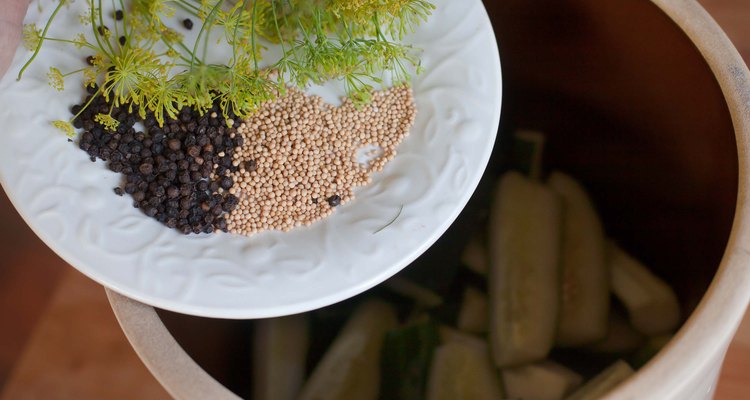
<p>Add the cucumbers and pickling spices to the crock. Pickling spices, such as black peppercorns, dill seeds and allspice, are natural preservatives that help defend against bacterial growth in pickles. You need about 1 tablespoon of pickling spices per pound of cucumbers.</p>
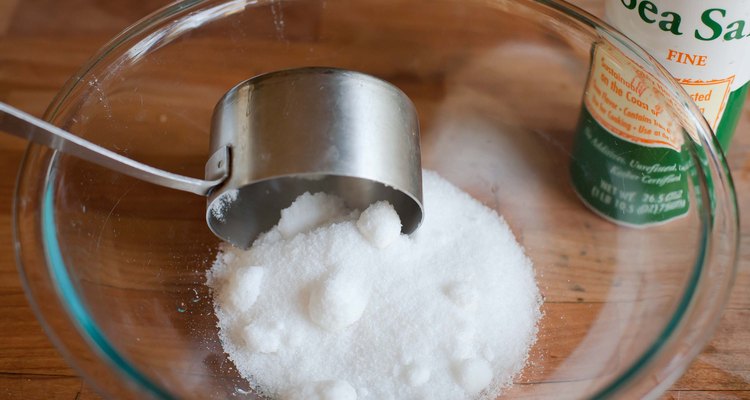
<p>Mix the salt and vinegar in the water in a separate bowl. You need about 1/2 cup of salt, 1/4 cup of vinegar and 1/2 gallon of water for every 4 pounds of cucumbers. Pour the brine over the cucumbers in the crock.</p>

<p>Place a plate top of the cucumbers inside the crock. Place a jar of water on top the plate to keep the cucumbers submerged in the brine.</p>
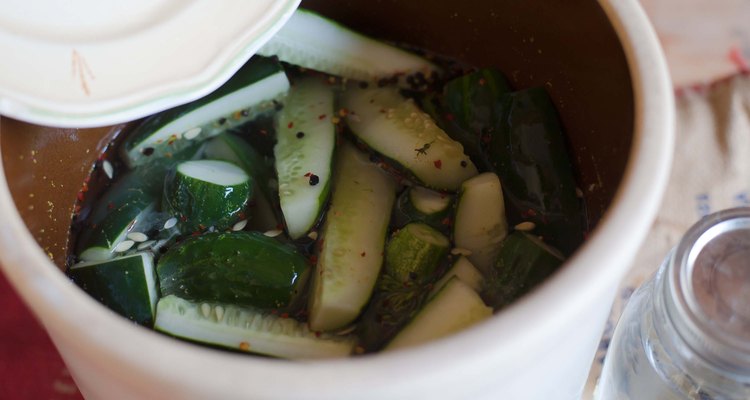
<p>Ferment the pickles for 2 to 3 weeks at 65 to 75 F or for 3 to 6 weeks at 55 to 65 F. Check the crock several times a week for surface scum and remove it as needed. Remove, rinse, dry, and replace the plate and jar if they develop scum or mold.</p>

<p>Remove the plate and jar from the crock after the pickles ferment. Pour the brine from the crock into a saucepan and bring it to a simmer. Simmer the brine for 5 minutes and strain through a mesh strainer lined with cheesecloth and into a bowl.</p>

<p>Pack the pickles into canning jars and pour the hot brine over them, leaving about 1/2 inch of headspace. Close the jars using the lids and rings and let them reach room temperature. Process the jars using the low-temperature pasteurization treatment of your hot-water canner, if desired. If you don't want to can the pickles, store them in the refrigerator after they reach room temperature.</p>
Related Articles
How to Pickle Without Vinegar

How to Make Pickle-Infused Vodka

How to Preserve Pimentos

How to Make Pickled Shallots

Why Did My Pickles Turn Cloudy?

How to Preserve a Hard Boiled Egg
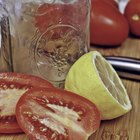
How to Make Tomato Juice From Fresh ...
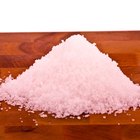
How to Use Sea Salt for Canning
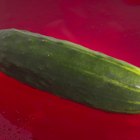
How to Convert Sour Pickles to Sweet ...
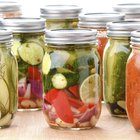
How to Can Green Tomatoes & Peppers ...

How to Preserve Sauerkraut

How to Make Brine Pickled Eggs
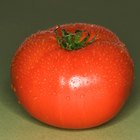
How to Blanch, Peel, & Freeze Whole ...

How to Substitute Dried for Fresh Dill ...

How to Preserve Nectarines

How to Store and Freeze Sundried ...

How to Blanch Cucumbers
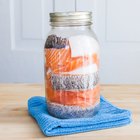
How to Can Salmon Fish

How to Pickle Brine Sausage

How to Process & Seal Hot Sauce Bottles
References
Writer Bio
Susan Peterson is the author of five books, including "Western Herbs for Martial Artists and Contact Athletes" and "Clare: A Novel." She holds a Ph.D. in text theory from the University of Texas at Arlington and is an avid cook and gardener.
Photo Credits
KatyJane Conlin/Demand Media